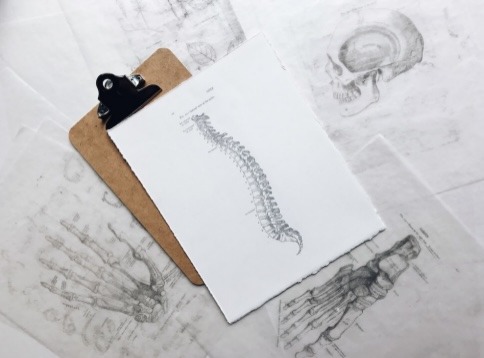Health
EVERYTHING YOU NEED TO KNOW ABOUT SCIATICA

Sciatica is a form of nerve pain that can be caused by an injury or irritation to the sciatic nerve, which is located in the gluteal and buttock regions of your body. The sciatic nerve is the longest and most thickly-walled nerve in the body, measuring almost the width of a finger. In reality, it is composed of five nerve roots: two of which originate from a region of the lower back known as the lumbar spine, and three of which originate from the final section of the spine known as the sacrum.
The right and left sciatic nerves are formed when a total of five nerve roots are brought together. One of your sciatic nerves exits your body just below the knee on each side of your body after traveling through your hips, buttocks, and one of your legs. After that, the sciatic nerve divides into several other nerves that travel further down your leg, into your foot and into your toes.
Table of Contents
How exactly does the pain of sciatica manifest itself?
Pain from sciatica can be experienced in a variety of ways, depending on the underlying cause. People have compared the sensation to being stabbed, shot, or jolted in their bodies. Some people describe this pain as “burning,” others as “electric,” and still others as “stabbing.”
It’s possible that the pain will be intermittent or it could be constant. Additionally, the pain in your leg is typically much more severe than the pain in your lower back. It’s possible that the discomfort will increase if you stay seated or standing for extended periods of time, if you stand up, or if you twist your upper body. A body movement that is involuntary and occurs all of a sudden, such as a cough or a sneeze, can also make the pain more severe.
How frequent is the condition of sciatica?
Sciatica is an extremely frequent form of back pain. sciatica adjustment in Scarsdale, NY affects the lives of about forty percent of persons in the United States at some point during their lifetime. Pain in the back is the third most common reason people see a doctor or other healthcare professional.
What are the elements that increase the likelihood of getting sciatica?
You are more likely to get sciatica if any of the following apply to you:
Have an injury or have had an injury in the past:
Sciatica is more likely to occur in people who have suffered an injury to their lower back or spine.
Overweight:
Your back can be compared to a vertical crane. The counterweights are going to be your muscles. The weight that needs to be lifted by your spine (crane) is the weight that you carry in front of your body. When you carry additional weight on your back, your back muscles, which act as counterweights, have to work harder. This can result in back strains, back discomfort, and other back-related problems.
Lacking in a solid core:
The muscles in your back and abdomen make up what is referred to as your “core.” Your lower back will receive more support proportionate to the strength of your core muscles. The only thing that can support your lower back is your muscles, in contrast to the area around your chest, which is supported by your rib cage.
Have a career that keeps you moving and active:
Professions that require you to move heavy objects or utilize your back frequently may raise your risk of developing low back problems. Similarly, jobs that require you to sit for lengthy periods of time may also increase this risk.
In the weight room, you do not have a proper posture:
If you don’t follow the correct body form when lifting weights or doing other types of strength training exercises, you can still be at risk for developing sciatica. This is true even if you are in good physical shape and stay active.
Have diabetes:
Sciatica is more likely to occur in people who have diabetes because diabetes increases the risk of nerve damage.
If you suffer from osteoarthritis, your spine may be harmed, and your nerves may be put at risk of injury.
Take a sedentary approach to life:
Your risk of developing sciatica goes up when you sit for extended periods of time, don’t exercise, and don’t do anything to maintain the muscles in your body moving, supple, and toned.
Tobacco smoke contains nicotine, which has been shown to harm spinal tissue, reduce bone density, and hasten the degeneration of vertebral disks.
How long should I wait to consult a healthcare expert?
The symptoms of sciatica might vary greatly from person to person. Pain can manifest itself in a variety of forms, range from mild to severe, and originate from a variety of sources. In certain cases, the initial treatment that is attempted can be one that is more severe. However, in general, if a trial of conservative, self-care treatments such as ice, heat, stretching, and over-the-counter medicines has not provided relief after a period of six weeks, it is time to return to a healthcare professional and try other treatment options. Ice, heat, and stretching are examples of such treatments.

The following are some more therapeutic options:
Physical treatment: The objective of physical therapy is to identify exercise movements that can alleviate sciatica by releasing pressure that has been placed on the nerve. Stretching exercises, which enhance muscle flexibility, should be included in a fitness regimen, and cardiovascular exercises should also be included (such as walking, swimming, and water aerobics). Your primary care physician can make a referral to a physical therapist for you. This therapist will work with you to create a stretching and aerobic exercise program that is unique to your needs. In addition, this therapist will recommend other exercises like using of the best mattress for sciatica that will strengthen the muscles in your back, abdomen, and legs.

-

 Tech3 years ago
Tech3 years ago6 Tips to Improving E-Commerce Websites
-

 Health4 years ago
Health4 years agoAdvantages and Disadvantages of Milk
-

 Home4 years ago
Home4 years agoAdvantages and Disadvantages of Village Life in Points
-

 Travel4 years ago
Travel4 years agoAdvantages and Disadvantage of Travelling
-

 Sports3 years ago
Sports3 years agoThe benefits of playing an online live casino
-

 Tech4 years ago
Tech4 years agoEssay on Advantages and Disadvantages of Offline Shopping
-

 Tech4 years ago
Tech4 years ago10+ Advantages and Disadvantages of Mobile Phones in Points
-

 Tech4 years ago
Tech4 years ago8+ Advantages and Disadvantages of Motorcycle |Having Bike